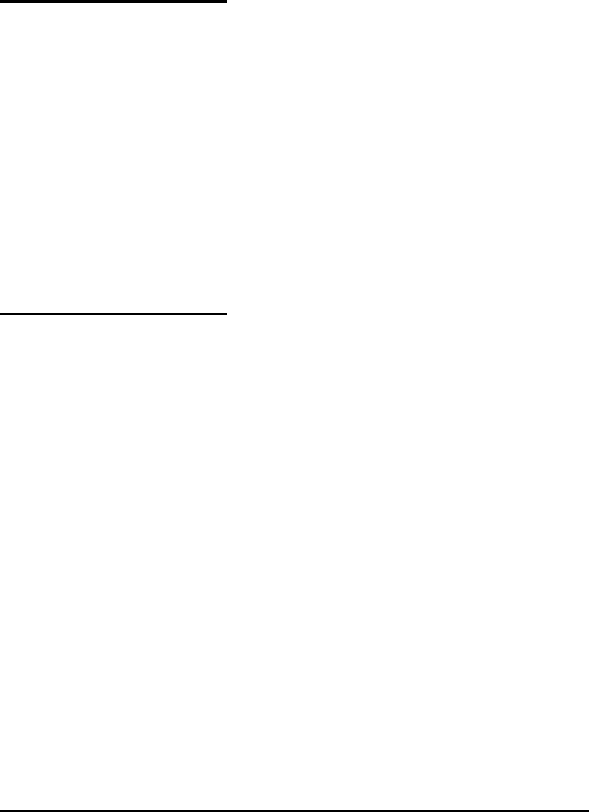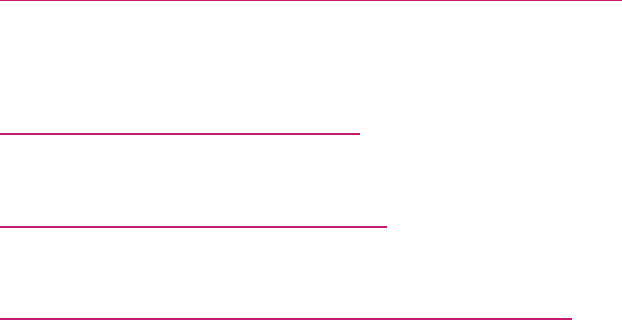
2
Contents
About this resource .................................................................................................... 2
Curriculum areas ........................................................................................................ 2
Drawing a face step-by-step ....................................................................................... 3
Drawing facial expressions ......................................................................................... 9
Face template worksheet ......................................................................................... 14
Facial expression worksheet .................................................................................... 15
How to draw eyes ..................................................................................................... 16
How to draw noses and mouths ............................................................................... 17
How to draw hair ...................................................................................................... 18
About this resource
Manga is a Japanese word that means comics or graphic novels. It is one of the
most popular and widely known pieces of Japanese culture. In Japan, almost 40% of
publications are manga books and manga style drawings are very commonly used
across design, including in advertisements and mascots.
This means it can be difficult to define what “manga style” is as it varies from artist to
artist. That being said, manga style typically uses clean lines.
Please note, there is no such thing as the “ultimate” manga style, and the aim of this
resource isn’t to limit any young person’s drawings or their own style. Hopefully, this
resource should allow your pupils to explore new drawing techniques and find a style
of their own!
Curriculum areas
This resource supports areas of Curriculum for Excellence in both Literacy and
English and Expressive arts:
Literacy and English
LIT 2-20a/3-20a, LIT 2-24a/3-24a, ENG 2-27a/3-27a, ENG 2-31a/3-31a

3
Expressive Arts
EXA 2-02a/3-02a, EXA 2-03a/3-03a, EXA 2-04a/3-04a, EXA 2-07a/3-07a
Drawing a face step-by-step
What you need:
• A4 size plain paper
• Copies of the printed templates on page 14 and 15 (at least one per pupil)
• Pencils, ideally HB or slightly softer
• Erasers
• Optional – a fine point liner to finalise the drawing
Starting out
Please make sure pupils draw very softly for their draft sketches. This is because all
the pencil lines will be erased when the image is finished. As they go, allow them
time to adjust and redraw their rough sketches until they’re happy with their drawing.
Step 1
Start by drawing a circle. Make sure it is not too large or small. If it’s too large, there’ll
be no space to add hair later, if it’s too small it’ll be difficult to add in facial features
later.
Step 2
Divide the circle into four even sections with a vertical and horizontal line.

4
Step 3
Extend the vertical line to mark the end of the chin. A long line will create a longer
face, and vice versa for a shorter face. In most manga, a longer face is usually used
for characters who are mature, cool or sharp. Shorter faces are usually used for
characters who are younger or cuter.
This is a good point to ask the pupils to think about what kind of character they want
to create. Ask them to think of some adjectives to describe their character, and how
they’ll convey that in their illustration. For example, an evil character may look
angrier, or have a longer face with a “cooler” look. A young and more upbeat
character might have a shorter face.

5
Step 4
Following the diagram, connect A, C and B with curved lines. It should almost look
like an upside-down egg.

6
Step 5
Start adding marks to plan where to place facial features. I usually add eyes just
under the horizontal line. It’s all about balance!
You can play around with where to place features. For example, placing the mouth
higher will create a longer chin and placing the eyes above the horizontal line will
create a longer face. The image on the right shows an average balancing of
features.

7
Step 6
This is where we add the ears and neck. Ears might be covered with hair later, but I
recommend drawing them at rough sketch stage.
Knowing where the ears are affects how to add hair, especially volume of hair and
hair style are affected by the existence of ears, for example, hair combed behind
ears/ears partly covered with hair.
The position of base of ears is almost next to eyes. Usually, I ask pupils to think
about the relation between temples of glasses and ears.

8
Step 7
Finally, adjust shapes of face and widths of face/neck accordingly. Please refer to
the image below for some possibilities. For example, I sometimes trim the sides of
the head to reduce its roundness.
As for neck, the wider neck as illustrated below immediately give the impression of a
more muscular person. On the other hand, if neck is narrower, it might make the
character look slim and/or sensitive.
Step 8
Before finishing the drawing, it’s time to look at how to draw the different facial
features and hair. Please refer to the further information on facial expressions on
page 11, and the examples of different features and hair on pages 16, 17 and 18
.
Ask the pupils to think about:
• What expression is their character expressing? Do they have a backstory for
why they’re feeling this way?
• How can you show this character’s personality through their features? (e.g.
hair, eyes, nose, mouth). You could show some examples of manga

9
characters on the board, asking the pupils to describe the character’s
personality based on how they’re drawn, paying attention to expression, pose,
facial features and so on.
• What will their character be wearing? What background is behind them?
Step 9
Time to add all the facial features and hair. Please make sure pupils are still drawing
softly. Ask them to think about how each facial feature and hairstyle, etc., best suits
their character. Make sure they keep think about balance – paying attention to the
size and position of each feature.
Step 10
Once the pupils are satisfied with their sketch, it’s time to finalise the image! Use
proper pressure on a pencil to finalise it – drawing over the best lines from the draft
to make the lines clearer. Then erase all unnecessary lines.
If you want to use a fine point liner to complete the image, then make sure they use
a lighter pressure throughout the drawing process, including any definition. Then ink
over the lines. Make sure the ink is completely dry before using erasers.
You can use a fine liner for details and a thicker pen for the face and hair’s outline.
Drawing facial expressions
Most manga works are character driven and a lot of the story is told through the
character’s emotions. This means capturing different emotions is crucial. Here are
my top tips for capturing different facial expressions:
Act it out!

10
Knowing how the face moves is key to understanding different expressions. Ask the
pupils to spend some time acting out facial expressions in pairs, or with a mirror.
Look at the details
Focus on how parts of the face interact – for example eyebrows, eyes, mouth and
cheek. If you move one part of your face, notice how other parts of the face also
move. If you smile, for example, your cheekbones rise and eyes close, or half-close.
This means drawing a smiling character with their eyes wide open won’t look quite
right.
Use manga marks
Manga has some unique markings for specific emotions. For example, the “anger
mark” or ikari maaku is used to show a character is angry or irritated and represents
a bulging vein. Paired with a downturned mouth and eyebrows, you can create a
character who is visibly angry. Or, paired with a smiling face, it represents a
character who is secretly angry but pretending to be happy. See examples of these
on page 11.
You can also see diagonal lines are used across the cheeks, and sometimes nose,
to show a character is blushing.
How does this character express their feelings?
Think about how the character is feeling – you can search for images to look at the
interactions of different feelings. Try mixing and matching different feelings, for
example, smiling sadly, crying happily or frowning angrily versus sadly.
Also think about how their personality will impact how different emotions might look
on their face. For example, someone who is shy might not have a big wide grin,
instead they might smile with their mouth closed.

11
Happy
The most obvious happy face is smiling or laughing. In this image, you can see the
eyebrows are relaxed, the eyes are closed and the diagonal lines are used to show
rosy cheeks.
Angry
Drawing the tension is the key. Most distinctive feature of angry face might be
eyebrows. Try to add lines between eyebrows and shape the eyebrow sharp arch to

12
realise the angry frown. The angry mark is added to visually show the anger. But
overusing some of the manga iconography, such as the angry mark, will make
artwork look slightly comedic, so I’d advise to use them sparingly!
Differs from the Happy face, those diagonal lines here are added to show boil over
emotion.
Sad
When one is sad, the whole face goes down. Both side of mouth go down and the
outer edge of the eyebrows go down. Drawing some teardrops might be a good
addition.
Surprise
All the facial features look as if they are exploding. Eyebrows rise, eyes wide open,
and mouth wide open too. If you keep the wide opened eyes but match them with the
angry eyebrows (and angry mouth maybe), the character looks unpleasantly
surprised or shocked. But with smiling mouth, it looks happily surprised.
Further resources
Chie Kutsuwada and Scottish Book Trust
• Find out more about Chie Kutsuwada on her website, including her Drawing
Manga video workshops
• For more creative writing, including illustration, see our creative writing for
schools and young writers resources
• Read our article on Journaling for wellbeing from illustrator Candice Purwin
Using manga in schools

13
• “Manga, graphic novels, and comics in Higher Education?”, University of West
London (though this article is looking at higher education, it looks at how
readers learn when reading manga, and suggests possible teaching activities)
• Webinars from Manga in Libraries on topics including disability visibility,
teaching with manga, supporting learners, BIPOC representation and more
• “Manga Belongs in School Libraries”, Journal Quest from the American
Association of School Librarians
• “Manga and anime declared good study tools for kids”, Japan Today

14
Face template worksheet
Print this page

15
Facial expression worksheet
Print this page

16
How to draw eyes
Print this page

17
How to draw noses and mouths
Print this page

18
How to draw hair
Print this page

